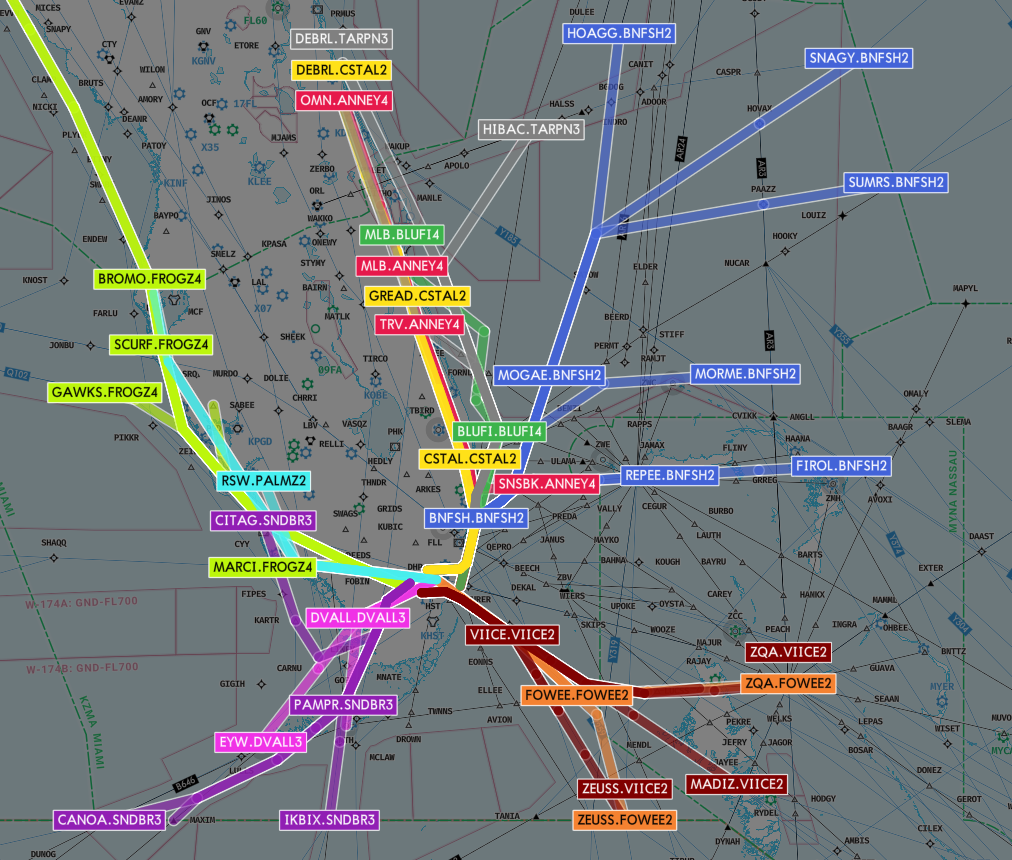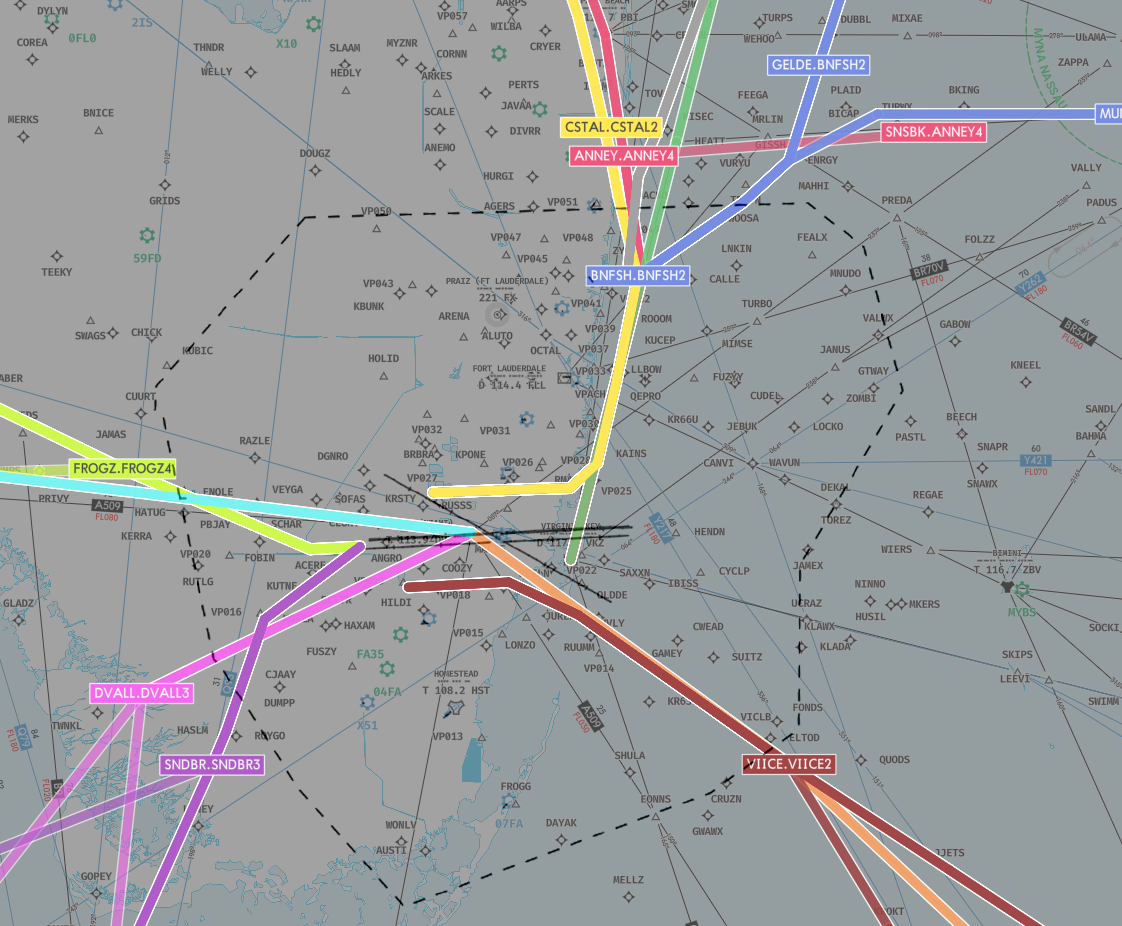¶ Miami International Airport Standard Operating Procedures
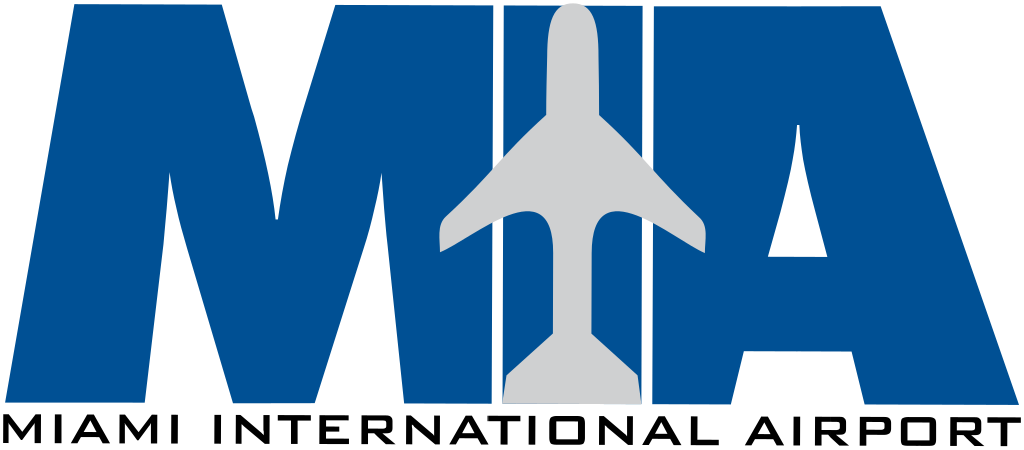
¶ Miami International Airport Standard Operating Procedures
This document is here to provide guidelines for all control and operation of traffic at the Miami International Airport. All controllers who wish to control the Miami International Airport must be well versed with the content of this document, and of the KZMA general SOP. If something is not covered in this document we suggest reviewing the Air Traffic Control Handbook, Order 7110.65 using your best judgment, and bring this situation to the attention of the Miami ARTCC leadership.
¶ Airport Information
The following information provided can be seen as a “quick reference” for information relating to the Miami International Airport.
- Airspace: Class B
- TRACON: MIAMI
- Field Elevation: 9 ft
- ICAO: KMIA
¶ Quick Reference Links:
¶ Delivery Positions
| Position | Frequency | FRA |
|---|---|---|
| KMIA_DEL | 135.35 MHz |  |
The job of the delivery controller is to provide relief to the ground controller by managing and issuing PDC’s (Pre-Departure clearance), ensuring that all flight plans comply with posted SOP’s, event co-ordination, and FAA procedures.
¶ Delivery Procedures
All IFR aircraft departing the Miami International airport shall be assigned a SID and Transition, unless further co-ordinated with the TRACON controller.
| SID | SID Type | Pronounciation | Aircraft | Runways |
|---|---|---|---|---|
| ALTNN# | RNAV | Alton | Jet | All |
| BNGOS# | RNAV | Bongos | Jet | All |
| DORRL# | Hybrid | Dorall | Turboprop at or above 13000 | All |
| FLMGO# | RNAV | Flamingo | Jet | All |
| FOLZZ# | RNAV | Fohls | Jet | All |
| GLADZ# | RNAV | Glades | Jet | All |
| GWAVA# | RNAV | Guava | Jet | All |
| HURCN# | RNAV | Hurricane | Jet | All |
| KLADA# | RNAV | Colada | Jet | All |
| LIFFR# | Hybrid | Liver | Jet at or below 12000 | All |
| MAYNR# | RNAV | Maynor | Jet | All |
| MIAMI# | Vectored | Miami | ALL | All |
| NNOCE# | RNAV | Nose | Jet (2300-0600 lcl) | 08L, 08R, 09, 12 |
Common Fixes
| FIX | Pronounciation |
|---|---|
| ALYRA | Alyra |
| BAGGS | Bags |
| BAIRN | Bear-ren |
| BOBOE | Bo-boey |
| DUCE | Doo-sen |
| GLADZ | Glades |
| GOZZR | Goser |
| JAGOR | Ja-gor |
| LULLS | Luls |
| ONEWY | One-way |
| PADUS | Pa-duss |
| SHAQQ | Shack |
| SMELZ | Smells |
| SNAGY | Snaggy |
| SNAGY | Snaggy |
| STYMY | Stimmie |
| SUMRS | Sommers |
| URSUS | Or-sus |
| WAPOM | Wa-pomm |
| ZFP | Free Port |
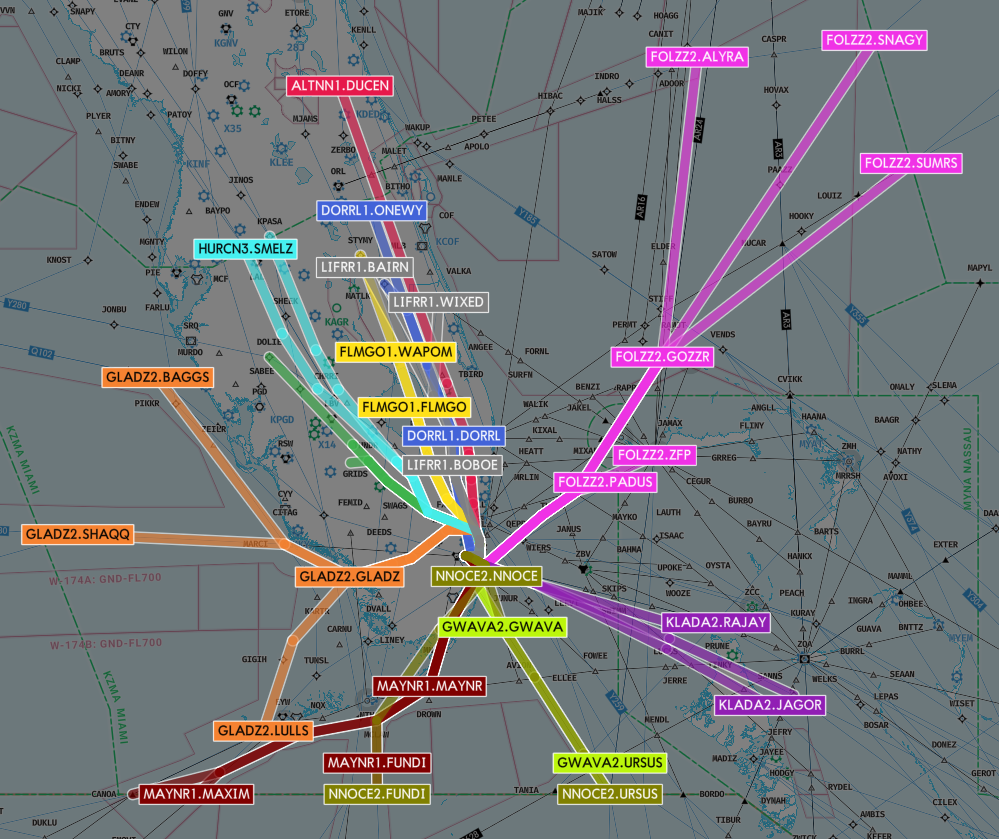
¶ IFR initial altitudes
| Aircraft type | Altitude |
|---|---|
| Jet | 5000 |
| Prop/Turboprop | 3000 |
¶ IFR Clearance (RNAV)
All IFR flights should be cleared via a RNAV departure unless co-ordenated with the TRACON controller.
Example:
KMIA ALTNN# SID
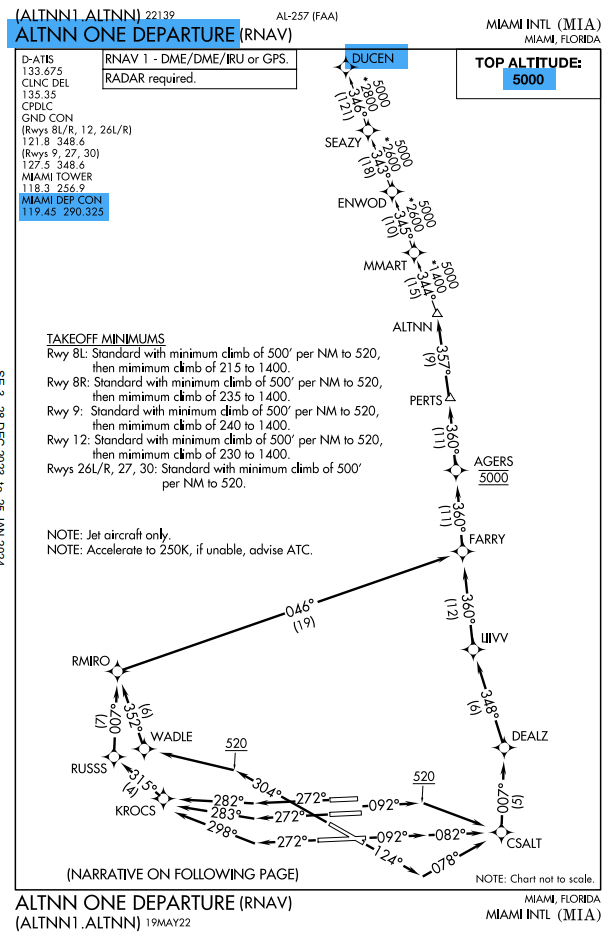
ExecJet 6-17, Cleared to Whiteplains Airport, via the ALTNN1 departure, DUCEN transition, (then) as filed. Maintain 5000, expect FL400 10 minutes after departure. Departure frequency 119.45, squawk 3551.
¶ IFR Clearance (Radar Vectors)
If there is no RNAV departure useable with the filed flight plan you can use the MIAMI# SID and instruct aircraft to expect radar vectors to first fix after departure.
Example:
Cleared to Boston Intl airport via the MIAMI# departure, radar vectors STYMY, then as filed. Maintain 5000, expect FL350 10 minutes after departure. Departure frequency 120.5, squawk 1234.
¶ IFR Squawk codes
Via Aurora IVAO network PVD settings or 3501-3577
¶ IFR Enroute altitudes
| Destination | Altitude |
|---|---|
| Tampa | At or below FL240 |
| Orlando | At or below FL230 |
| Key West | At or below FL200 |
| Nassau | At or below FL230 |
¶ Pre-Departure Clearance
PDC via CPDLC is available at this airport, but may be issued via voice.
Miami International airport is surrounded by class B airspace. Aircraft entering class B airspace VFR require a clearance in accordance with 7110.65 Chapter 7, section 9-2.
VFR Deaprture Example:
Cleared out of the Miami class bravo airspace, maintain VFR at or below 2500 until further advised. Departure frequency 120.5. Squawk 0301.
¶ VFR Squawk Codes
Via Aurora or 0301-0377
¶ VFR Traffic Patterns
Before issuing a VFR Traffic Pattern clearance check the active ATIS to ascertain what runways are in use, and any additional requierments thet might have.
| Runway | Direction |
|---|---|
| 8L | Left |
| 9 | Right |
| 26R | Right |
| 27 | Left |
- The TPA (Traffic Pattern Altitude) for helicopters is 650 ft, all other aircraft is 1,000 ft (with exeptions).
- Runways 12, 8R, and 30 are NOT autherised for closed VFR traffic patterns due to the conflict with approch paths.
A good example of a traffic pattern clearacne for a fixed wing aircraft on RW 8L is as follows:
VFR Local Pattern Example:
Cleared into the Miami class bravo airspace, pattern altitude 1000, expect left closed traffic runway 8L, squawk 0301.
¶ Special VFR operations
Special VFR and Non-engine aircraft operations and not permitted in the class B airspace of the Miami International Airport.
| Position | Frequency | FRA |
|---|---|---|
| KMIA_GND | 121.8 MHz |  |
The job of the ground controller is to control and co-ordinate the smooth and efficient operation and flow of traffic on the airport movement zones.
¶ Taxi Instructions
Do not issue conditional instructions that are dependent upon the movement of an arrival aircraft on or approaching the runway or a departure aircraft established on a takeoff roll. Do not say, “Line up and wait behind landing traffic,” or “Taxi/proceed across Runway One-Two behind departing/landing Citation.”
If the specific taxi route ends into a connecting taxiway with the same identifier (for example, taxiway “M” connects with Taxiway “M1”) at the approach end of the runway, the connecting taxiway may be omitted from the clearance.
Example:
“American 123, runway 8L, taxi via M”
¶ Taxi Operations
M/N: Taxiway M is preferred for outbound traffic and taxiway N for inbound traffic.
P/Q: Taxiway Q is preferred for outbound traffic and taxiway P for inbound traffic.
S/T: Taxiway S is preferred for outbound traffic and taxiway T for inbound traffic.
A380 Chart
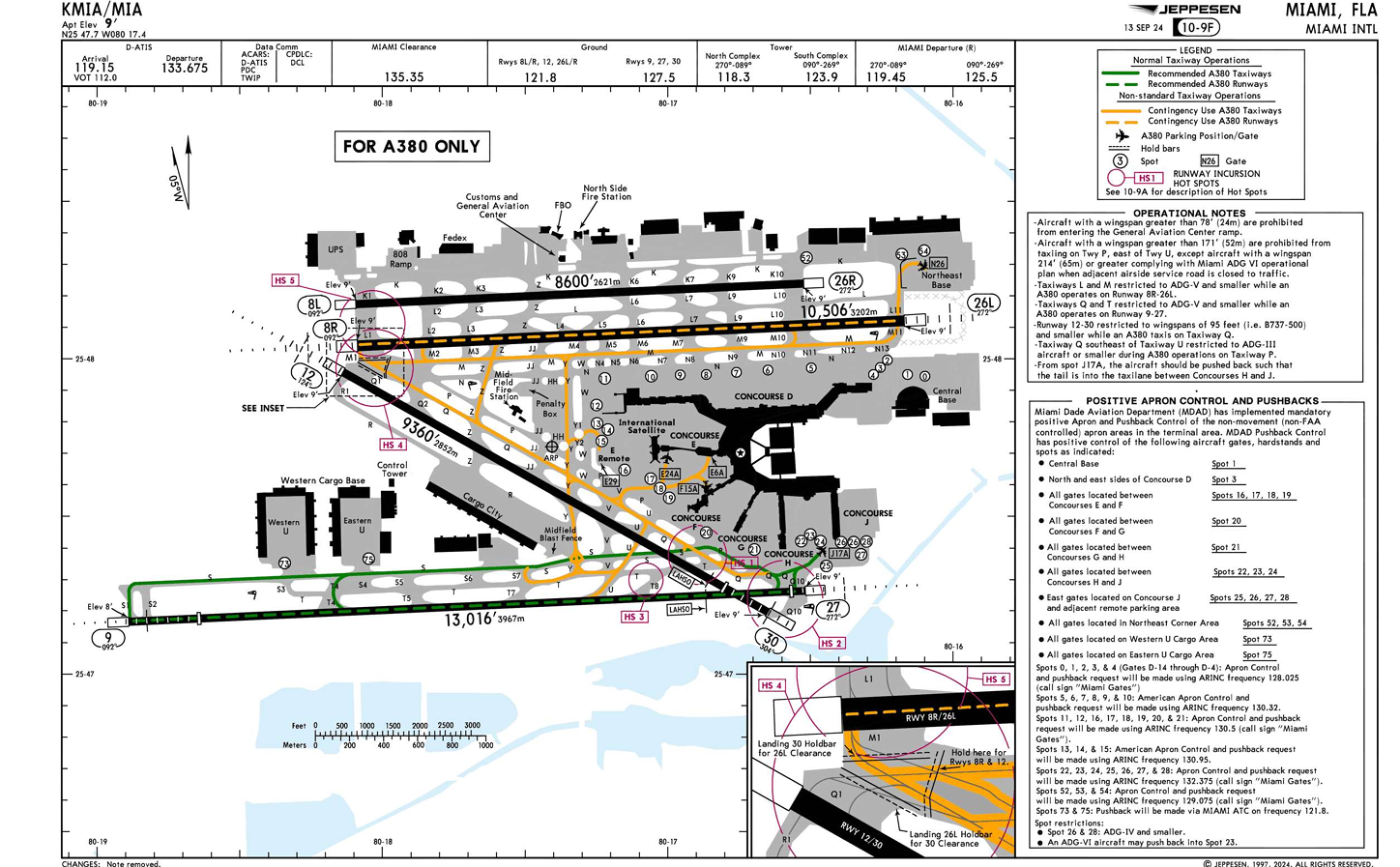
B747 Chart
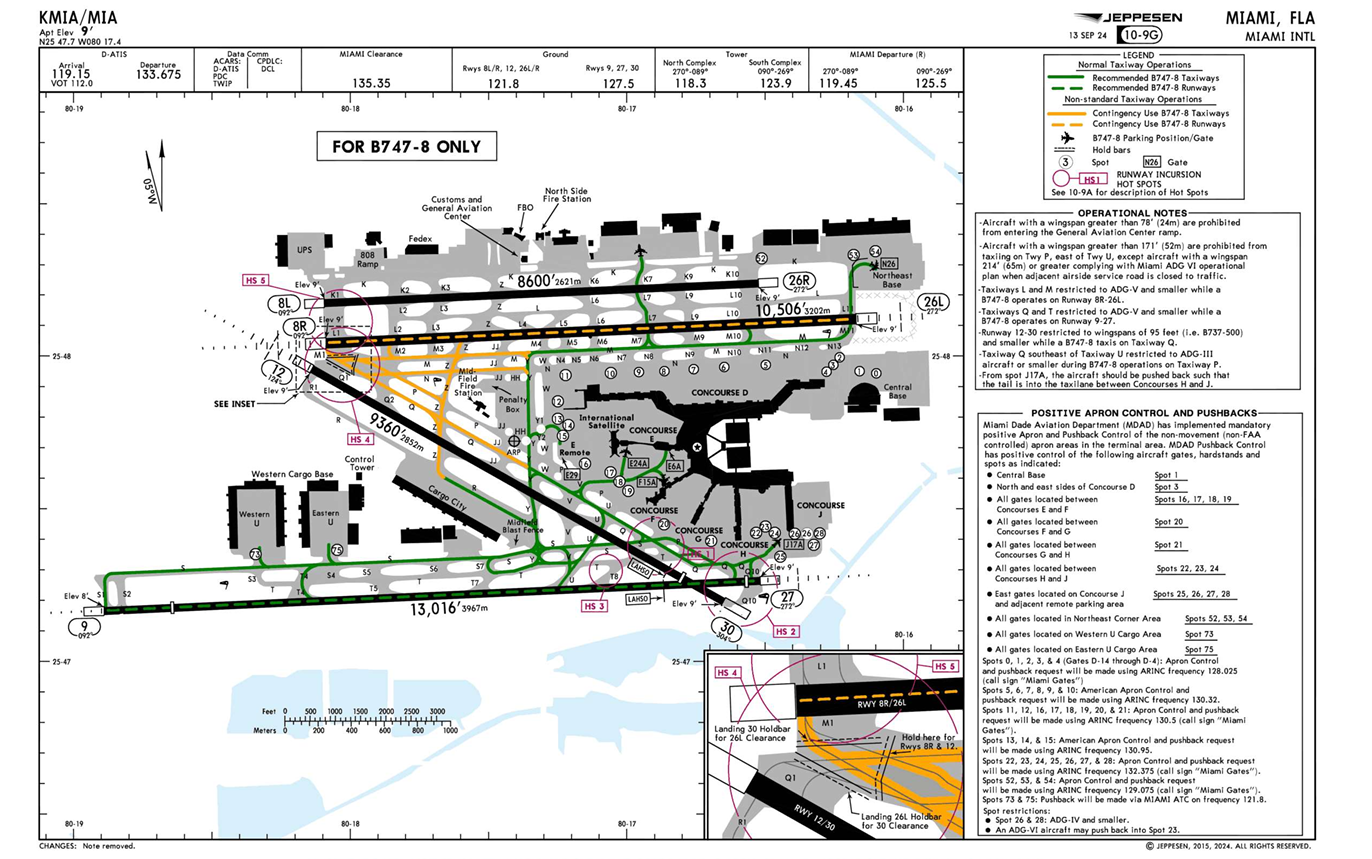
¶ Runway Crossings
When both Runway 8L-26R and Runway 8R-26L are open, multiple runway crossings are authorized.
Example:
“American 123, Cross 8L and 8R at L1”
In the coordination, use the Lima taxiway identifier (eg. L3, L6, L10, etc) to reference the crossing points, not Kxx or Mxx.
When requesting a runway crossing from TWR, specify the runway and the point at which crossing will occur, using the format of “Cross (rwy) at (intersection)?”.
Example of co-ordenating a corssing:
Ground: “AAL123, cross 8L at L3?”
Local: “AAL123, cross 8L at L3. AB”
TWR’s approval is only valid for one aircraft to cross as specified.
¶ Restrictions
Aircraft with a wingspan greater than 78 feet (e.g. E170, B737, A318, MC21) are prohibited from entering the General Aviation Center ramp.
Aircraft with a wingspan greater than 171 feet (e.g. B747, A340, A380, AN124) are prohibited from taxiing on taxiway P, east of taxiway U.
¶ Parking positions
United States
| Airline | Terminal |
|---|---|
| Alaska Airlines | J |
| American Airlines | D, E |
| Delta Air Lines | H |
| Eastern Airlines | F, E |
| Frontier Airlines | D, F |
| GlobalX | D, E |
| JetBlue | E |
| Southwest | G |
| Spirit | J |
| Sun Country | F |
| United Airlines | H |
¶ Transponder
Miami International Airport is facilitated with ASDE–X (Ground Radar). Pilots are required to operate transponders on mode ‘active’.
| Position | Frequency | FRA |
|---|---|---|
| KMIA_TWR | 118.3 MHz |  |
The Miami Tower controller is responsible for managing traffic on the active runways, and traffic on the taxiways around active runways.
¶ Airspace
Miami International Airport airport is surrounded by class B airspace. Aircraft operating in class B airspace receive services as outlined in 7110.65 Chapter 7, section 9.
¶ Area of Responsibility
Local Control owns all active RWY’s. The ceiling is 2500ft MSL in a 6nm circle around the airport.
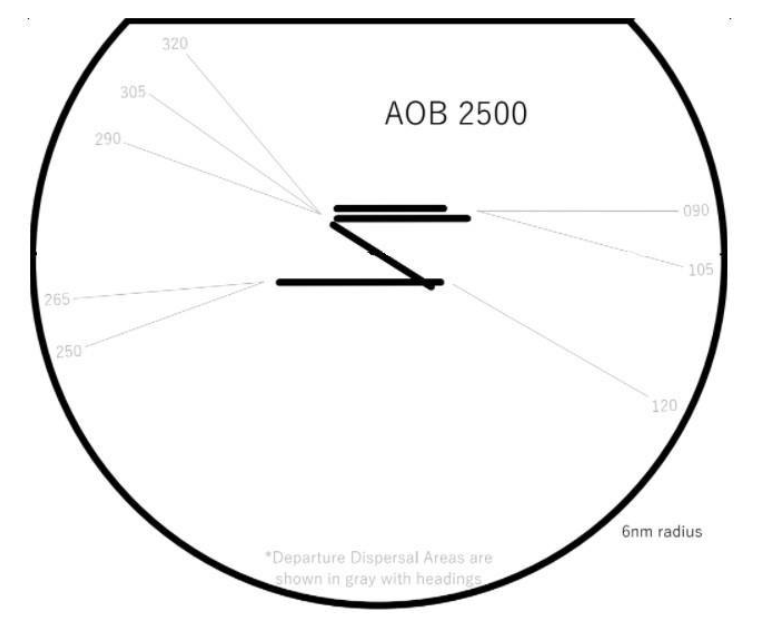
¶ Runway configuration
When winds are calm the Miami Airport will be in East Ops.
Landing and departing: 08L, 08R, 09, 12
Landing and departing: 08L, 08R, 09, 12
Landing and departing: 26L, 26R, 27, 30
- via Digital ATIS
¶ Land and Hold Short Operations (LAHSO)
LAHSO is authorized between arrivals on runway 9 and runway 12 only in VMC when the LAHSO runway is dry and has a tailwind component of less than 3 knots. Do not issue LAHSO clearances to any foreign air carriers.
¶ Runway Distance Remaining
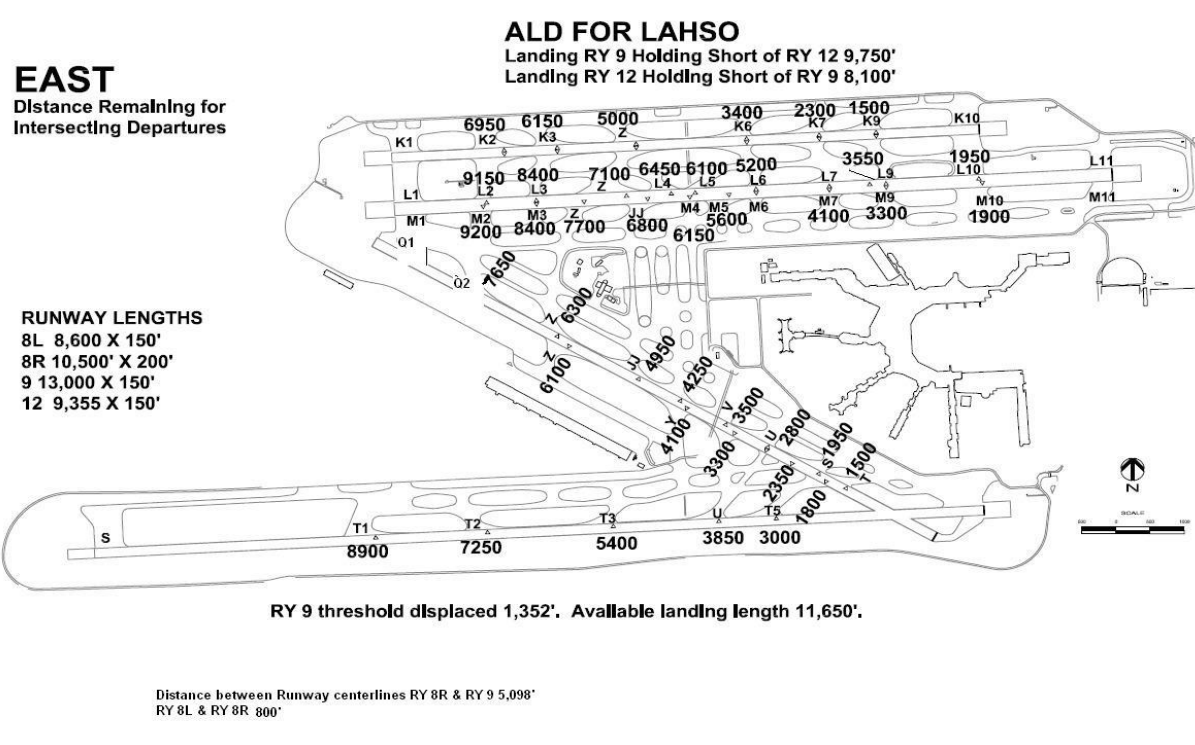
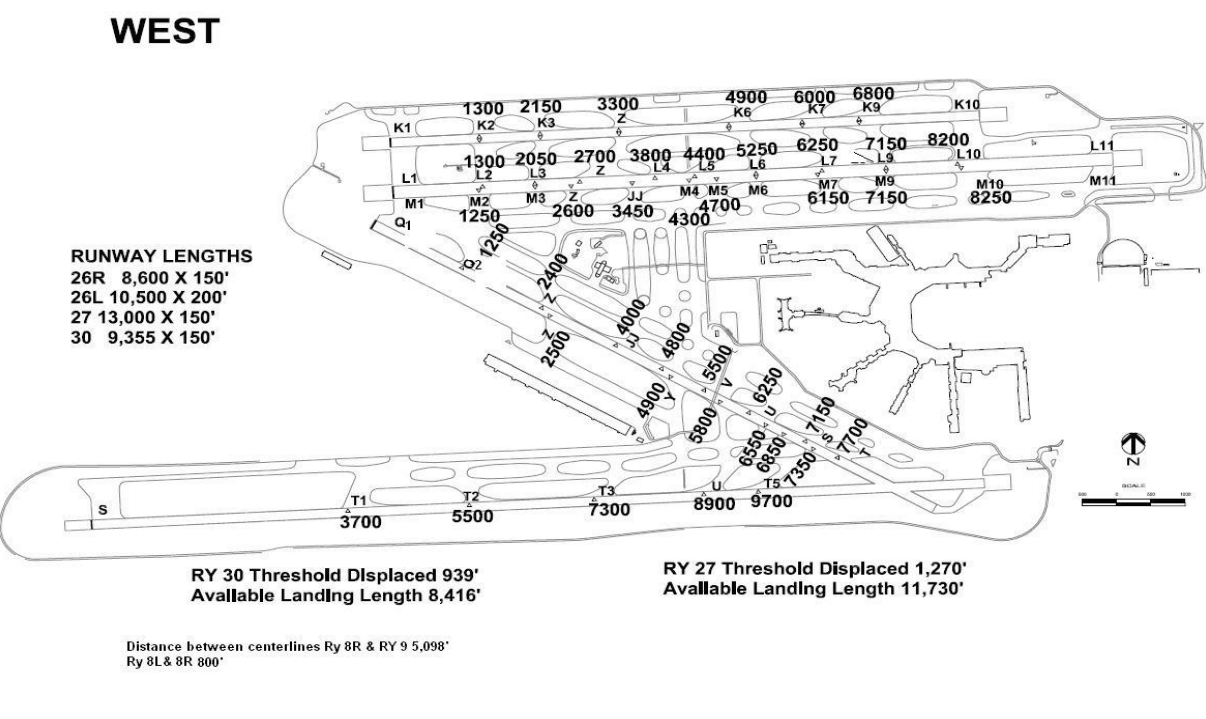
¶ VFR transitions
VFR aircraft transitioning the Miami class Bravo airspace north to south or south to north will do so via the Red Road transition (mid field at 3,500 feet MSL). These aircraft will be under Air Traffic Control of the overlying facility.
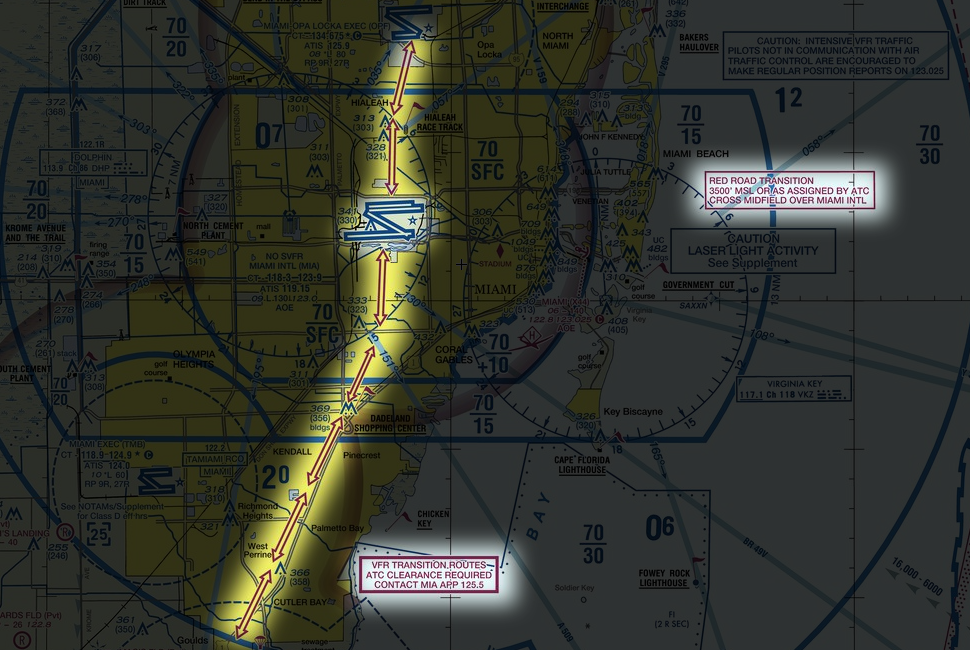
| Position | Frequency | FRA |
|---|---|---|
| KMIA_APP | 120.5 MHz |  |
| KMIA_F_APP | 133.05 MHz |  |
¶ Area of Responsibility
The Miami TRACON is responsible to provide radar service for following airfieds up to 16,000 ft:
- Miami International Airport - KMIA
- Miami Executive Airport - KTMB
- Miami-Opa locka Executive Airport - KOPF
- Fort Lauderdale–Hollywood International Airport - KFLL
- Fort Lauderdale Executive Airport - KFXE
- North Perry Airport - KHWO
- Pompano Beach Airpark - KPMP
- Boca Raton Airport - KBCT
- Homestead Air Reserve Base - KHST
- Dade-Collier Training Airport - KTNT
- Ocean Reef Club Airport -07FA

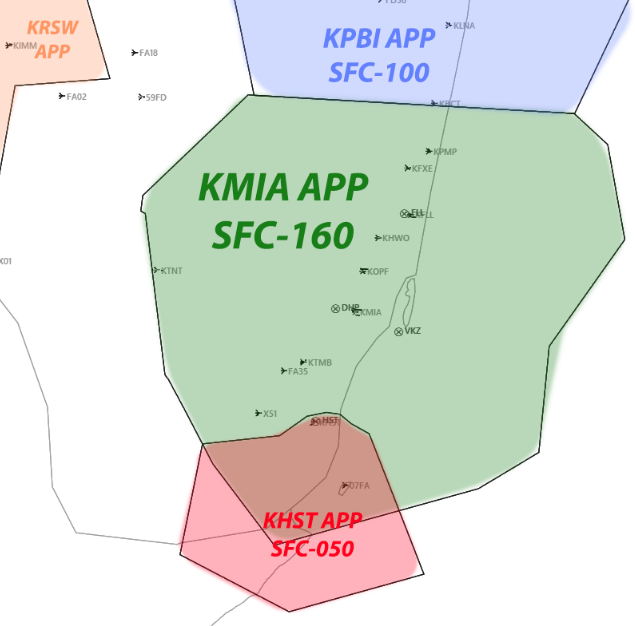
¶ STARs
